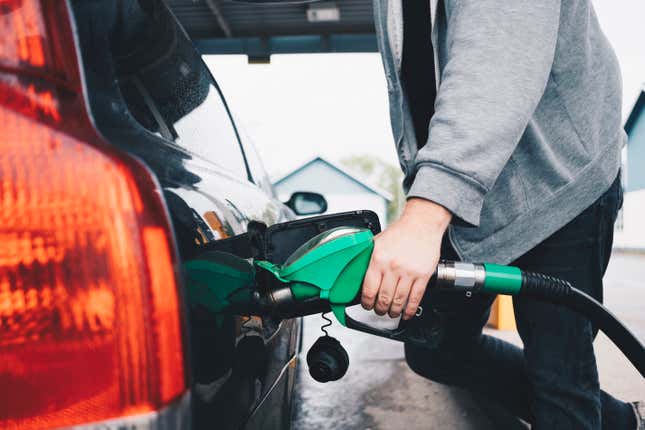
President Joe Biden is taking a trip to the Corn Belt today, specifically Menlo, Iowa, where he’ll announce that E15 gasoline can be used all summer long. The administration says the aim is to help reduce rising gas prices, and mirrors a previous Trump Administration policy, which lasted from May 2019 to July 2021. However, the actual consumer cost savings of the change will likely be minimal, and the decision could have negative environmental impacts.
Allowing year-round E15 is a boost to the U.S. corn industry and will no doubt annoy oil companies. Amazingly though, not everything that oil companies hate is automatically good for the planet.
E15 fuel is made up of 10.5% to 15% ethanol, derived mostly from corn, and is normally banned in the summertime because of smog concerns. Higher ethanol content in gasoline generally can make for fuels that give off more vapor, which reacts with sunlight and contributes to ground-level ozone.
The evidence is unclear on whether E15 actually causes a larger quantity of smoggy air pollution than the more commonly used E10. What is clear, though, is that adding ethanol to gas can hurt the environment in other ways.
A portion of the gas you buy is already ethanol. The Renewable Fuel Standard, an EPA program that’s existed in its current form since 2007, requires that gas sold at pumps contain 10% ethanol (E10). The Renewable Fuel Standard was enacted with the intent of increasing U.S. oil independence and reducing the environmental impacts of American gas guzzling.
As a result of the mandate, almost all gas stations are set up to sell E10. However, in the program’s 15 years, multiple research studies and government assessments have demonstrated that the supposed environmental benefits of the Renewable Fuel Standard are unfounded.
Growing, transporting, processing, and ultimately burning corn-based ethanol does not seem to meaningfully reduce the carbon emissions associated with car transportation. Plus, the Renewable Fuel Standard policy and the subsequent ethanol expansion has had negative effects on water quality, soil health, and wildlife by incentivizing more land be used in industrial, monoculture production as opposed to alternatives like the Conservation Reserve Program that pays landowners to set aside uncultivated habitat.
Nonetheless, the corn lobby has been pushing for more ethanol in gasoline for years, as bigger requirements boost corn demand and prices. Shifting the standard from E10 to E15 would call for a 50% increase in ethanol production, in theory amplifying the environmental consequences.
The temporary policy change allowing summertime E15 won’t automatically increase E15 availability or use, and will likely not instantly boost ethanol production. Only about 2,300 stations sell the fuel nationwide, according to the EPA. That number probably won’t change much without broader policy adjustments. However, the existing Renewable Fuel Standard program is up for renewal this year. A part of the process will be reassessing and resetting the ethanol mandate. Today’s E15 allowance could set the stage for an overall increase in gasoline’s ethanol content in the future.
So, if E15 isn’t the way forward for the environment, does that mean good old petroleum-based gasoline is better? Definitely not. The best way to minimize air pollution, lower greenhouse gas emissions, protect biodiversity, and spend less at the pump is to reduce the amount of fuel we’re burning, no matter what the ethanol content.